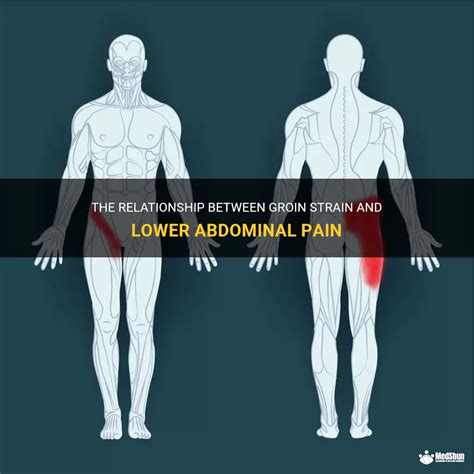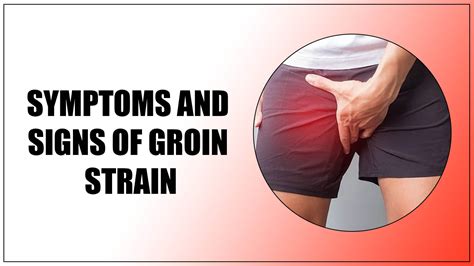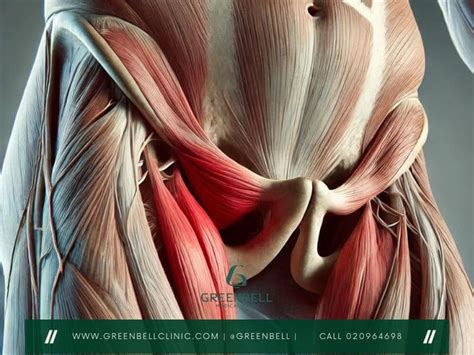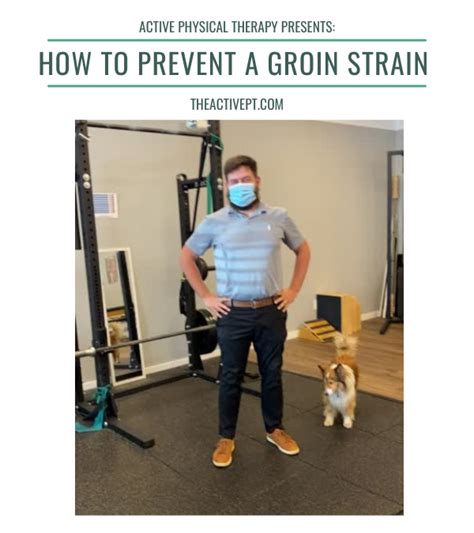Intro
Recover from groin strain with our expert guide, covering symptoms, treatment, and exercises for rapid healing, including thigh stretches and strengthening techniques for optimal rehabilitation and prevention of future injuries.
The groin area is a complex region that consists of several muscles, tendons, and ligaments that work together to facilitate movement and provide stability to the body. A groin strain, also known as a pulled groin, occurs when one or more of these muscles are stretched or torn, leading to pain, discomfort, and limited mobility. Groin strains are common injuries that can affect anyone, regardless of their age, fitness level, or occupation. They are particularly prevalent among athletes who participate in sports that involve sudden changes of direction, such as soccer, football, and basketball. However, groin strains can also occur in individuals who engage in activities that involve repetitive twisting, bending, or lifting.
Groin strains can be acute or chronic, and their severity can range from mild to severe. Mild groin strains may only cause minor discomfort and do not significantly impact daily activities, while severe groin strains can be debilitating and require prolonged periods of rest and rehabilitation. The recovery process for a groin strain typically involves a combination of rest, physical therapy, and stretching exercises. It is essential to seek medical attention if the pain is severe, or if there are any concerns about the injury. A healthcare professional can provide a proper diagnosis, recommend treatment options, and develop a personalized recovery plan.
The importance of proper recovery and rehabilitation cannot be overstated, as it plays a critical role in preventing further injury, promoting healing, and restoring function to the affected area. A well-structured recovery plan can help individuals return to their normal activities and sports, while also reducing the risk of future groin strains. In this article, we will provide a comprehensive guide to groin strain recovery, including the causes, symptoms, diagnosis, treatment options, and prevention strategies. We will also discuss the importance of patience, consistency, and proper technique during the recovery process.
Groin Strain Causes and Risk Factors

Other risk factors for groin strains include poor flexibility, weak core muscles, and inadequate footwear or equipment. Individuals who are overweight or obese may also be at a higher risk due to the increased stress on their muscles and joints. Furthermore, groin strains can be caused by direct blows to the groin area, such as those that occur during contact sports.
Types of Groin Strains
There are several types of groin strains, each with distinct characteristics and symptoms. The most common types of groin strains include: * Adductor strains: These occur when the adductor muscles, which are located on the inside of the thigh, are stretched or torn. * Iliopsoas strains: These occur when the iliopsoas muscle, which runs from the lower back to the femur, is stretched or torn. * Abdominal strains: These occur when the abdominal muscles, which are located in the front of the abdomen, are stretched or torn.Groin Strain Symptoms and Diagnosis

A diagnosis of a groin strain is typically made based on a physical examination and medical history. A healthcare professional may perform a variety of tests, including range of motion assessments, strength tests, and palpation, to determine the extent of the injury. Imaging studies, such as X-rays or MRIs, may also be ordered to rule out other potential causes of the symptoms.
Groin Strain Grading System
Groin strains are typically graded on a scale of 1 to 3, with grade 1 being the mildest and grade 3 being the most severe. The grading system is as follows: * Grade 1: Mild strain with minimal pain and no significant loss of function. * Grade 2: Moderate strain with moderate pain and some loss of function. * Grade 3: Severe strain with significant pain and substantial loss of function.Groin Strain Treatment and Rehabilitation

The initial treatment phase typically involves the RICE principle, which consists of:
- Rest: Avoiding activities that aggravate the injury and allowing the affected area to rest.
- Ice: Applying ice to the affected area to reduce pain and inflammation.
- Compression: Using compression bandages or wraps to reduce swelling.
- Elevation: Elevating the affected leg above the level of the heart to reduce swelling.
As the injury heals, physical therapy exercises can be initiated to promote strength, flexibility, and range of motion. These exercises may include stretching, strengthening, and proprioception training.
Groin Strain Rehabilitation Protocol
A typical rehabilitation protocol for a groin strain includes the following phases: * Phase 1: Acute phase (0-72 hours) + Rest, ice, compression, and elevation + Pain management with medication * Phase 2: Subacute phase (72 hours-2 weeks) + Progressive strengthening and stretching exercises + Proprioception training + Gradual return to activities * Phase 3: Advanced phase (2-6 weeks) + High-level strengthening and conditioning exercises + Agility and plyometric training + Return to sport-specific activitiesGroin Strain Prevention and Maintenance

Regular maintenance and prevention strategies can help individuals reduce their risk of developing groin strains and promote overall lower extremity health.
Groin Strain Maintenance Exercises
The following exercises can help maintain strength and flexibility in the groin area: * Lunges * Leg press * Leg extensions * Leg curls * Calf raises * Glute bridges * Planks * Side plankThese exercises should be performed regularly, with a focus on proper technique and gradual progression of intensity and volume.
What is the most common cause of groin strains?
+The most common cause of groin strains is sudden contractions or stretching of the muscles in the groin area, often due to overuse, poor training techniques, or inadequate warm-up or cool-down routines.
How long does it take to recover from a groin strain?
+The recovery time for a groin strain can vary depending on the severity of the injury, but typically ranges from a few weeks to several months. Mild groin strains may only require a few days of rest and recovery, while more severe strains may require several weeks or even months of rehabilitation.
Can groin strains be prevented?
+Yes, groin strains can be prevented by incorporating proper training techniques, adequate warm-up and cool-down routines, and regular strengthening and stretching exercises. Maintaining a healthy weight and body composition, wearing proper footwear and equipment, and avoiding overuse and repetitive activities can also help reduce the risk of developing groin strains.
In conclusion, groin strains are common injuries that can affect anyone, regardless of their age, fitness level, or occupation. A well-structured recovery plan, including rest, physical therapy, and stretching exercises, can help individuals return to their normal activities and sports, while also reducing the risk of future groin strains. By understanding the causes, symptoms, diagnosis, treatment options, and prevention strategies for groin strains, individuals can take proactive steps to promote lower extremity health and reduce their risk of injury. We encourage readers to share their experiences and ask questions in the comments section below, and to consult with a healthcare professional if they have any concerns about groin strains or other lower extremity injuries.
